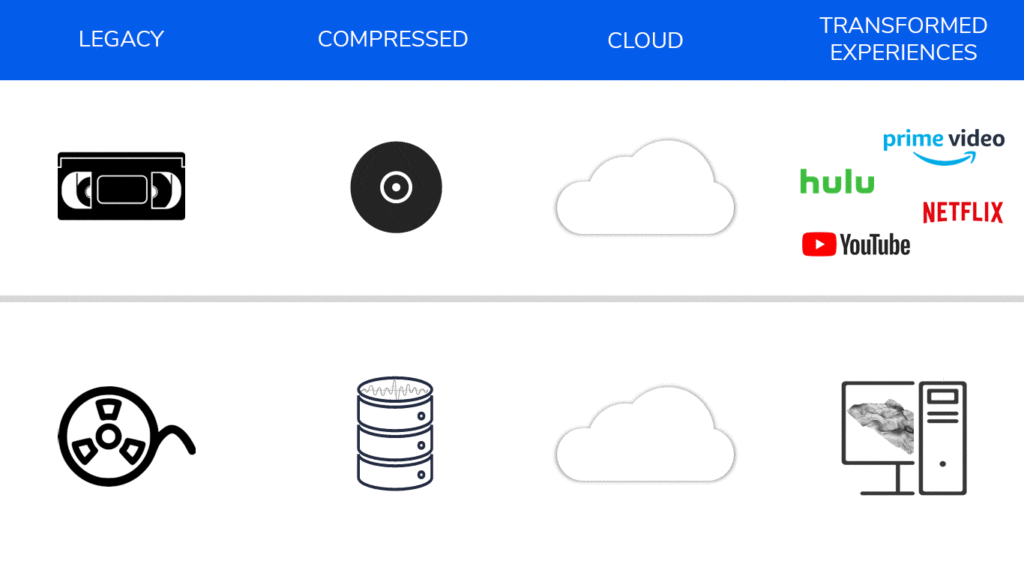Written by Andy James, Chief Product Officer
Transforming Seismic Data Workflows
Think about the way we watch movies and TV shows have transformed over the past two decades. VHS tapes eventually transitioned into DVDs, but once compression came along, companies like Netflix, Hulu, and Amazon Prime Video have revolutionized how we watch our favorite shows and movie today by streaming content from the cloud, allowing us to watch from anywhere, anytime, on practically any device.
Apply this same analogy to the seismic data industry, which exists on tapes and offline storage. The oil and gas industry is beginning to see the value of bringing petabytes of subsurface data to the cloud for archive purposes, but using files such as SEG-Y and other interpretation formats in the cloud is both costly and cumbersome. Once the data is in the cloud, companies soon begin to realize how difficult it is to use.

Geoscientists can now experience transformed seismic data workflows with the power of Bluware Volume Data Store™ (VDS) and Adaptive Streaming™ technology.
Fast Data Access
Quick, unrestricted access to seismic data in the cloud is possible with Bluware’s Adaptive Streaming technology, which enables geoscientists to retrieve data directly from cloud object storage at adaptive signal qualities based on their workflow needs. Bluware VDS optimizes the data delivery by moving only what is needed for the given scenario, very similar to our Netflix analogy.
Bluware VDS seismic data environment eliminates the need to copy data to expensive cloud file systems by only serving the required signal quality to the workflow, yielding extremely fast data access and eliminating the need to write to disk storage.
Bluware’s industry-tested compression allows the original SEG-Y data to be compressed to a level chosen by the user, creating significant size reduction without impacting workflows. VDS is fully available with an SDK to enable integration to existing software.
Read Subsurface Data Instantly and Experience Transformed Workflows
Bluware’s Adaptive Streaming technology is easily accessible by using Bluware Flexible Access Storage Transcoding™ (FAST), which acts in a similar way to a media player. Seismic data streamed to FAST is converted live into SEG-Y or other data formats readable by seismic interpretation applications which can deliver data in real-time without duplicating the data first.
FAST responds to the read request that is made within the application. When the application makes a read request, FAST fetches the data from VDS. Using Bluware Adaptive Streaming technology, FAST can select a signal quality that can be customized by the user within the FAST interface. When the data is received, FAST can recreate the data in the format needed by the application on-the-fly.
The use of Bluware Adaptive Streaming technology delivers just the signal quality needed by the application workflow. By consuming reduced data, the application can receive a performance boost, compared to reading the whole data set into the application. Providing the user with the ability to specify the signal quality to be used by the application allows the end-user to choose a balance of quality and performance.
FAST Data Delivery Workflow
The combination of receiving only the data required for the specific workflow in conjunction with Adaptive Streaming, significantly reduces the amount of data delivered to your application based on the signal quality needed, resulting in performance benefits and less network traffic.
With Bluware Adaptive Streaming users can now accelerate workflows and remove the lengthy and expensive step of data preparation.

Good analogies to make the concept of adaptive streaming simple to understand.